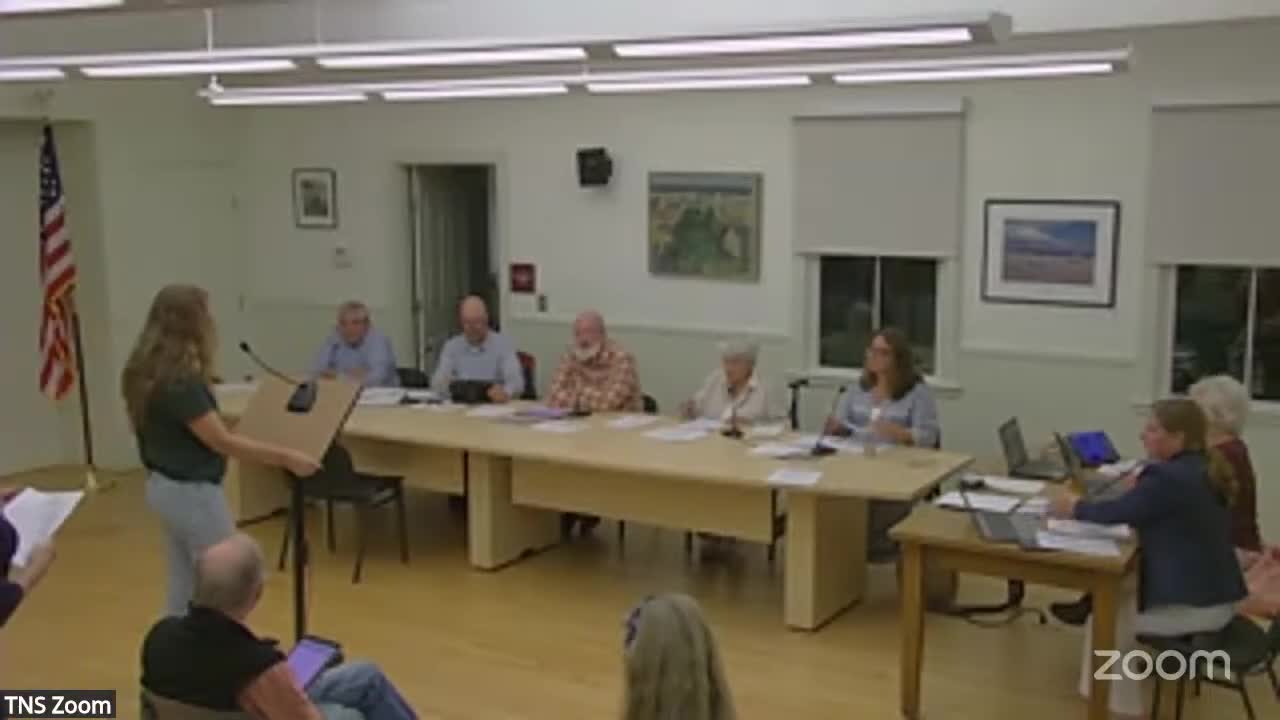Coastal resilience committee outlines Corn Neck Road master plan and near‑term implementation funds
October 07, 2025 | New Shoreham, Washington County, Rhode Island
This article was created by AI summarizing key points discussed. AI makes mistakes, so for full details and context, please refer to the video of the full meeting. Please report any errors so we can fix them. Report an error »

The Coastal Resilience Committee, assisted by staff and consultants, updated the New Shoreham Town Council on a multi‑phase master plan to shore up Corn Neck Road and adjacent coastal infrastructure.
Nora Clark, climate resiliency coordinator for The Nature Conservancy, and Judy Gray, chair of the Coastal Resilience Committee, described a planning effort stretching back to 2016 and a 2017 transportation resilience study that identified Corn Neck Road as a chronic vulnerability. Gray said the project has moved from planning into engineering and design development with work funded by the Rhode Island Infrastructure Bank’s Municipal Resilience Program and grants from the National Fish and Wildlife Foundation (NFWF).
The presenters said the project emphasizes nature‑based solutions intended to reduce storm surge and flooding while keeping the corridor open for evacuation and emergency access. Phase 1 targets three priority areas: the Town Beach parking areas, the Scotch Beach Road parking area and the dune/beach paths. Concepts include raising parking surfaces, using permeable pavers or regrading with vegetated stormwater swales, and deploying seasonal pedestrian/vehicle mats on dune paths to reduce dune erosion. Judy Gray said GZA developed three concepts, including a “do nothing” option, and that the town has budgeted implementation reserves: “we have about $200,000 for implementation of the final designs that reach the permitting stage.”
Phase 2 would address larger, higher‑cost elements: the Town Beach Pavilion (including options to relocate landward and allow dune reformation), reinforcement or redesign of the southern revetment (armor stone or nourishment, with modeling by URI), and marsh management strategies such as thin‑layer deposition and living shorelines to help marshes keep pace with sea‑level rise.
Mike Shea, director of public works, described the parking‑lot and path concepts as “realistic” and emphasized maintenance considerations: “I tried to emphasize solutions with the least amount of maintenance. That’s always a big issue.” The committee expects to provide the council with a draft master plan and slides for review; Gray said the committee will send the draft master plan for council distribution and that the town will keep pursuing state partnerships because Corn Neck Road is a state‑owned roadway in part of the corridor.
Ending: The committee framed the plan as a “mosaic” of solutions to be advanced in steps, with design work intended to make future disaster‑recovery or mitigation grants usable. The council did not take formal action other than to receive the presentation and discuss next steps for permitting, funding coordination and community outreach for phase 2 pavilion options.
Nora Clark, climate resiliency coordinator for The Nature Conservancy, and Judy Gray, chair of the Coastal Resilience Committee, described a planning effort stretching back to 2016 and a 2017 transportation resilience study that identified Corn Neck Road as a chronic vulnerability. Gray said the project has moved from planning into engineering and design development with work funded by the Rhode Island Infrastructure Bank’s Municipal Resilience Program and grants from the National Fish and Wildlife Foundation (NFWF).
The presenters said the project emphasizes nature‑based solutions intended to reduce storm surge and flooding while keeping the corridor open for evacuation and emergency access. Phase 1 targets three priority areas: the Town Beach parking areas, the Scotch Beach Road parking area and the dune/beach paths. Concepts include raising parking surfaces, using permeable pavers or regrading with vegetated stormwater swales, and deploying seasonal pedestrian/vehicle mats on dune paths to reduce dune erosion. Judy Gray said GZA developed three concepts, including a “do nothing” option, and that the town has budgeted implementation reserves: “we have about $200,000 for implementation of the final designs that reach the permitting stage.”
Phase 2 would address larger, higher‑cost elements: the Town Beach Pavilion (including options to relocate landward and allow dune reformation), reinforcement or redesign of the southern revetment (armor stone or nourishment, with modeling by URI), and marsh management strategies such as thin‑layer deposition and living shorelines to help marshes keep pace with sea‑level rise.
Mike Shea, director of public works, described the parking‑lot and path concepts as “realistic” and emphasized maintenance considerations: “I tried to emphasize solutions with the least amount of maintenance. That’s always a big issue.” The committee expects to provide the council with a draft master plan and slides for review; Gray said the committee will send the draft master plan for council distribution and that the town will keep pursuing state partnerships because Corn Neck Road is a state‑owned roadway in part of the corridor.
Ending: The committee framed the plan as a “mosaic” of solutions to be advanced in steps, with design work intended to make future disaster‑recovery or mitigation grants usable. The council did not take formal action other than to receive the presentation and discuss next steps for permitting, funding coordination and community outreach for phase 2 pavilion options.
View full meeting
This article is based on a recent meeting—watch the full video and explore the complete transcript for deeper insights into the discussion.
View full meeting